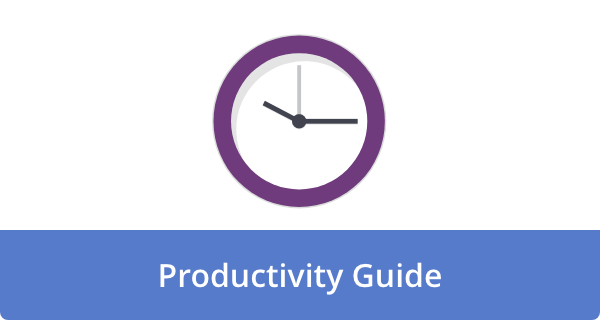

Often, our calendars look like to-do lists that someone else compiled for us — filled with dozens of meetings followed by endless tasks. However, your calendar shouldn’t feel like a cage. Ideally, it should be a tool that can be customized, flexible, and designed to meet your needs.
To regain control over your time, don’t squeeze more in. It’s about aligning your energy, priorities, and reality with your schedule. This post aims to show you how to do just that.
Start with Your Life, Not Just Your Work
Most people schedule their time around obligations, such as meetings, deadlines, and errands. However, this means your time is always reactive.
But it’s time to turn the tables.
Start by deciding what’s most important to you. You can do this by asking yourself;
- Is there a time of day when I feel the most energized?
- Are there any activities that recharge me?
- What are the most critical commitments — work and personal?
Based on those, you can build your calendar. Consider personal priorities like workouts, creative time, or even intentional rest before putting anything else on your calendar. After that, meetings, tasks, and requests should take up the remaining space.
You can think of it as securing your non-negotiables to ensure your time aligns with your values, not just your inbox or other people’s priorities.
Identify Your Peak Productivity Zones
Circadian rhythms vary from person to person. Some people are sharpest in the early morning. At the same time, others find their stride in the middle of the afternoon or late at night.
During the next week, track your natural energy and focus levels throughout the day. What time of day do you feel most clearheaded? When do you feel drained the most?
Using this information, design your calendar as follows;
- When you are at your peak, block out deep work like writing, strategy, and making complex decisions.
- Save shallow tasks, like emails, admin, and logistics, for windows with lower energy costs.
Don’t waste high-focus time on low-impact activities. With this approach, you can align your schedule with your biology rather than fighting against it.
Use Time Blocking to Create Structure
Blocking your time is a great way to take control of your calendar. By assigning specific time windows to particular types of work, you avoid a chaotic list of tasks.
Here’s a simple way to get started;
- Theme your days. As an example, Mondays are used for meetings, Tuesdays for deep work, and Fridays are used for planning.
- Chunk your time into focused blocks. 90 minutes is often the ideal amount of time.
- Group similar tasks together. As a result, switching contexts will be reduced.
Using this structure helps clarify your day, reduces mental clutter, and makes it easier to defend your focus.
Build in Buffer Time (You’re Probably a Time Optimist)
Most people underestimate how long a task actually takes. We assume we can write a report in 30 minutes. In reality, though, it usually takes 90 minutes. Overscheduling, lateness, and stress can be caused by this “time optimism.”
You can combat this by:
- Adding a 15-minute buffer between meetings.
- When working on creative or deep projects, double your time estimate.
- Create “catch-up” blocks in your calendar for unfinished tasks.
By including margins in your calendar, you make it flexible, not fragile.
Make Your Calendar Visual and Intuitive
There’s more to a calendar than just being functional — it should be readable too. For this reason, use colors, labels, and layouts to make it intuitive.
- Color-code by category. For example, blue for deep work, red for meetings, green for personal.
- Use emoji or icons in event titles. This will make them stand out.
- Add descriptions or links to event notes so you’re prepared. Among the items that might be included are agendas, Zoom links, and talking points.
By keeping your calendar clear and visually organized, you reduce friction and are more likely to stick to it.
Schedule Planning Rituals (Weekly & Daily)
Calendars should be proactive, not reactive. This requires regular review and adjustment before chaos begins.
- Weekly planning session (30–60 mins). Prepare the upcoming week’s time blocks by reviewing the previous week, setting 2–3 priorities, and identifying upcoming roadblocks.
- Daily startup/shutdown rituals (5–10 mins). Review your plan, confirm top priorities, shift blocks if necessary, and close the loop.
In addition to creating stability and giving you a sense of control, these rituals keep your calendar in line with reality rather than just ideals.
Design for Flexibility, Not Perfection
Perfection is the enemy of progress.
There will be times when your schedule doesn’t go as planned — and that’s okay. Calendars should not have rigid structures, but rather be aligned with your goals and adaptable to changing needs.
In the event of an unexpected event;
- Instead of abandoning your time blocks, reassign them.
- To absorb disruptions, keep a “flex block” open every day.
- Be sure to check in daily, reprioritize, and implement a course correction strategy.
Life’s unpredictability doesn’t matter to a resilient calendar; it keeps you on track no matter what.
Audit and Refine Regularly
As your needs, goals, and energy change, so should your schedule.
Keeping this in mind, ask yourself the following questions once a month:
- What consistently gets overlooked or bumped?
- Is there anywhere on my schedule that I feel rushed or scattered?
- Are there any calendar habits that work well for you?
If you need to adjust, use those answers. Perhaps you need fewer meetings, longer focus blocks, or better transitions between tasks. Calendars are living tools, so treat them as such.
Common Pitfalls to Avoid
Despite well-designed schedules, things can still go wrong. Here are some traps to watch out for;
- Overbooking. Too many tasks are crammed into too little time, resulting in daily failures.
- Ignoring transitions. Fatigue increases when you jump from one task to another without a buffer.
- Saying yes too often. It’s easy to burn out if your calendar reflects the priorities of other people more than your own.
- Not reviewing regularly. If you fail to check in weekly and daily, your calendar becomes stale.
When you avoid these, you won’t feel overwhelmed, but you’ll stay aligned.
Bonus: Your Calendar Is a Boundary-Setting Tool
Keep in mind that your calendar isn’t just for you. You can also communicate your availability and priorities to others through it.
Here are some uses for it;
- For deep work, set “do not disturb” blocks.
- Be sure to block personal time so it isn’t accidentally overwritten.
- To improve collaboration, share project-specific calendars with your team.
Your calendar can reinforce healthy boundaries and help others respect your time when used intentionally.
Final Thoughts: You’re in the Driver’s Seat
A person’s time isn’t just something they manage; it’s something they design. Instead of reflecting someone else’s expectations on your calendar, it should reflect your goals, your energy, and your life.
Making your calendar a source of calm, clarity, and control can be accomplished by blocking time, building buffers, planning ahead, and being flexible.
So check out your week. What can you shift, cancel, or redesign to make your schedule more efficient?
Start there. Why? As soon as you gain control of your calendar, you begin taking control of your life as well.
Image Credit: Photo by Luke Webb; Pexels











John Hall
John Hall is the co-founder of Calendar a scheduling and time management app. He’s also a keynote speaker that you can book at http://www.johnhallspeaking.com.